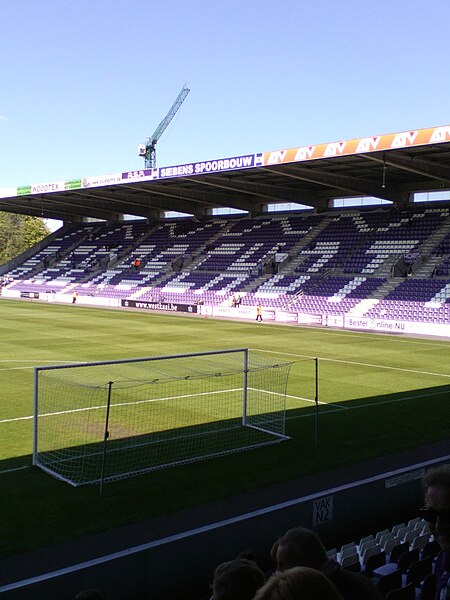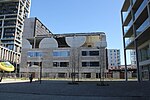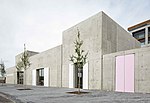Olympisch Stadion (Antwerp)
1920 establishments in BelgiumAthletics (track and field) venues in BelgiumBeerschot A.C.Buildings and structures in AntwerpFootball venues in Flanders ... and 15 more
K. Beerschot V.A.C.Olympic athletics venuesOlympic equestrian venuesOlympic field hockey venuesOlympic football venuesOlympic gymnastics venuesOlympic modern pentathlon venuesOlympic rugby union venuesOlympic stadiumsOlympic weightlifting venuesRugby union stadiums in BelgiumSport in AntwerpSports venues completed in 1920Sports venues in Antwerp ProvinceVenues of the 1920 Summer Olympics

The Olympisch Stadion (Dutch pronunciation: [oːˈlɪmpis ˌstaːdijɔn]) or Kielstadion [ˈkilstaːdijɔn]) was built as the main stadium for the 1920 Summer Olympics in Antwerp. For those games, it hosted the athletics, equestrian, field hockey, football, gymnastics, modern pentathlon, rugby union, tug of war, weightlifting and korfball (demonstration) events. Following the Olympics it was converted to a football stadium. Its current tenant is K Beerschot VA, a Belgian football club. There are no remnants of the Olympic athletics track. It is possible that Archibald Leitch was involved in the design of the stadium having made several visits prior to the Games.
Excerpt from the Wikipedia article Olympisch Stadion (Antwerp) (License: CC BY-SA 3.0, Authors, Images).Olympisch Stadion (Antwerp)
Stadionstraat, Antwerp
Geographical coordinates (GPS) Address External links Nearby Places Show on map
Geographical coordinates (GPS)
| Latitude | Longitude |
|---|---|
| N 51.185 ° | E 4.3822222222222 ° |
Address
Olympisch Stadion
Stadionstraat
2020 Antwerp (Antwerp)
Antwerp, Belgium
Open on Google Maps










